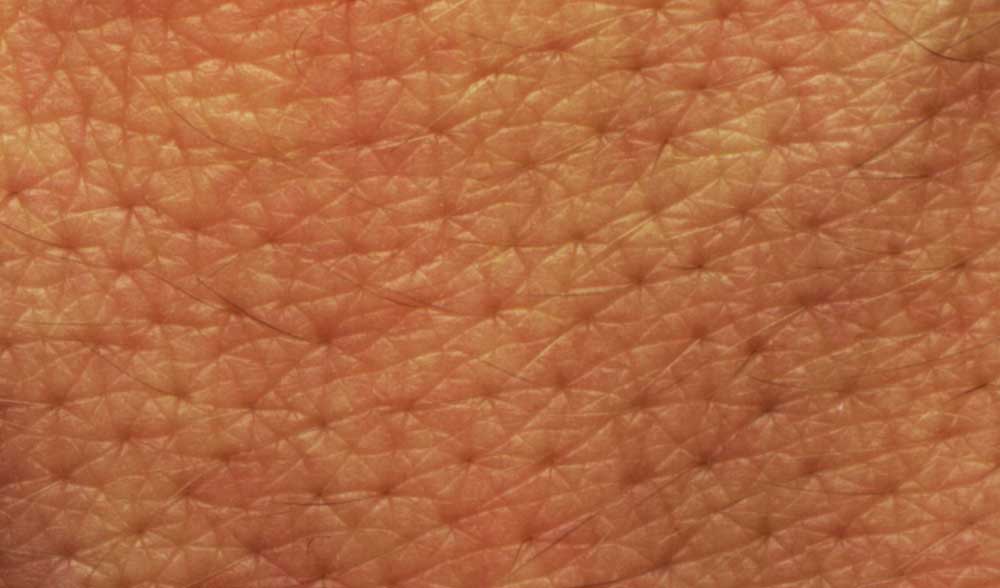Flagship Project Dedicated to Skin Research
Researchers, engineers, and physicians at the University of Zurich, ETH Zurich and several university clinics in Zurich will work together in the future to develop new therapies and diagnostic procedures for skin diseases and tissue repair disorders, while also investigating the underlying mechanisms of these diseases. These efforts are part of the monumental project “Skintegrity” – the new flagship project of the research network “University Medicine Zurich” (see below). The project received one million Swiss francs in seed funding, with UZH and ETH Zurich each receiving half of the sum. The project officially began on 1 October.
Optimistic mood
The project is headed by Sabine Werner, professor of cell biology at ETH Zurich, and by Lars French, professor of dermatology and venereology at UZH and head of the Department of Dermatology at the UniversityHospital Zurich.
UZH, ETH Zurich, and the University’s hospitals already boast high levels of expertise in skin research, both in basic research and clinical application. “In its work with the University Hospitals – where solutions for skin replacements from the body’s own cells have already been clinically tested – UZH can contribute the medical expertise needed to translate research results into clinical practice,” says Christoph Hock, Vice President for Medicine and Science of the University of Zurich. Detlef Günther, Vice President of Research and Corporate Relations at ETH Zurich, adds that Zurich, as a hub for medical research and clinical care, can now further develop its interdisciplinary assets in the area of skin research. “Not only will the project promote skin research in Zurich, it will also give a crucial boost to the medical technology industry, biotechnology, and the pharmaceutical industry in Switzerland.”
Due to the increase in the occurrence of skin diseases such as chronic wounds, melanoma, and inflammatory dermatoses (e.g. scleroderma), continued advances in diagnostics and treatments are a high priority. “The unique collaboration between highly specialized clinicians and researchers at UZH and ETH Zurich unites a remarkable level of expertise in biology, medicine, and mechanical science and engineering,” is how Lars French views the project.
Interdisciplinary approaches
In the scope of the monumental project Skintegrity, various research groups in Zurich will launch new collaborations and strengthen existing networks. For instance, a phase I study with skin made of the body’s own (autologous) cells was successfully completed at the University Children’s Hospital. And one of the major innovations Skintegrity brings is the involvement of ETH Zurich’s engineering expertise in the project.
The interdisciplinary approach of Skintegrity also bears potential for education programs for doctors, natural scientists, and engineers. “Young researchers entering the project at this stage will first and foremost receive an exceptional interdisciplinary education,” explains Sabine Werner.
Artificial skin and medical imaging for lymphatic vessels
Skintegrity encompasses ten sub-projects involving a total of 26 research groups. Some of the sub-projects are delivering findings that can soon be applied; nevertheless, in addition to therapies and diagnostics, basic research remains a core domain. The combination of approaches was chosen to guarantee that new therapeutic and diagnostic approaches can be secured in the medium-to-long term.
Skintegrity projects include, for example, the production of artificial skin for transplantations or for research purposes. There is also a project to measure the mechanical properties of skin in order to diagnose fibrotic skin diseases such as scleroderma at an early stage using a non-invasive procedure. In another project, researchers are developing imaging technology for early diagnosis of lymphatic vessel dysfunction. Finally, researchers are conducting basic research using methods from modern biology to study the mechanisms of delayed wound healing and the parallels between wound healing and carcinogenesis.
In the medium-term, the project’s founders aim to expand the project beyond Zurich. “There are outstanding researchers and clinicians working on skin at other universities in Switzerland. We are currently looking into ways to involve both these experts and private industry in the project,” says Prof. Sabine Werner from ETH Zurich. There are also plans to tap into further sources of funding to secure the project’s long-term viability.
Lars French, UZH professor and head of the Department of Dermatology at the UniversityHospital Zurich, believes that “in the long run, the synergetistic work of experts from a variety of disciplines will lead to a broad spectrum of innovative and personalized clinical solutions in the fields of dermatology, rheumatology, pediatrics, and skin surgery.”
